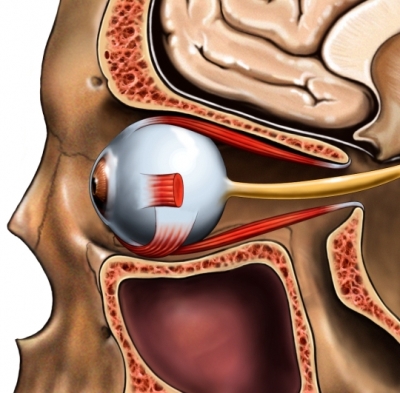Orbital cellulitis is an infection of the soft tissue and fat that hold the eye in its socket. Orbital cellulitis is a potentially dangerous condition. It may begin suddenly or be a result of an infection that gradually becomes worse.
This condition causes painful symptoms. It is not contagious and anyone can develop this condition, it most commonly affects children. One study reported that children are approximately 16 times more likely to suffer from orbital cellulitis compared to adults. It is twice as common among male children compared to female children. Some studies reported that orbital cellulitis follows a seasonal pattern, with the highest rates occurring during the fall and winter, which coincides with the higher rates of sinus infection during the colder months.
Symptoms include:
- Painful swelling of the upper and lower eyelid, possibly the eyebrow and cheek.
- Bulging eyes
- Decreased vision
- Pain when moving the eye
- Fever of 102°F or over
- General ill feeling
- Difficult eye-movement sometimes with double vision
- Shiny red or purple eyelid
- Tender or warm tissues around the eye
- Headache
- Runny nose
Causes:
The main cause of orbital cellulitis is from bacterial infection spread via the paranasal sinuses, usually from a previous sinus infection. Without treatment infections that start in your mouth or sinuses can spread to other parts of your body including the eye socket. Other ways in which orbital cellulitis may occur are from blood stream infections or from eyelid skin infections. Upper respiratory infection, sinus infection, trauma to the eye, ocular or periocular infection, and systemic infection all increase one’s risk of orbital cellulitis. It also can be a reaction to a stye (a tender bump on your eyelid that forms when a gland on your eyelid gets infected).
Treatments:
It may begin suddenly or be a result of an infection that gradually becomes worse. An orbital cellulitis infection can get worse very quickly. A person with this condition must be checked every few hours. With prompt treatment, the person can recover fully. If not treated promptly complications can be severe to include blindness, nerve damage to the face and even deadly. A hospital stay is often needed. This will allow rapid change in treatment as needed.
Medication used to treat orbital cellulitis include:
- Antibiotics—to treat the infection
- Diuretics or eye drops—to help decrease pressure within the eyeball
- Corticosteroids pills—to reduce inflammation, swelling, and pain
- Pus may need to be drained. It may be taken from an infected sinus or orbit.
- Hib B vaccine may also help to protect children.
Complications:
- Cavernous sinus thrombosis-a blood clot in an area at the base of the brain.
- Hearing Loss
- Septicemia-a bacteria in the blood (bacteremia) that often occurs with severe infections. Also called sepsis, septicemia is a serious, life-threatening infection that gets worse very quickly.
- Meningitis-inflammation of the membranes that surround and protect the brain and spinal cord.
- Optic nerve damage and loss of vision
Sources:

